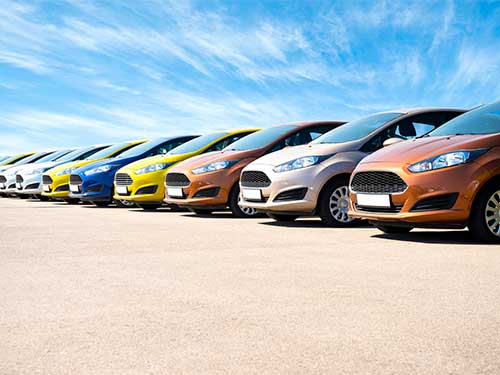It wasn’t all that long ago that the primary safety feature you could find in the most advanced cars on the road consisted of a seat belt that stretched across your lap. Then a few models began offering exotic features such as antilock brakes and dual front airbags (which didn’t become mandatory for all passenger vehicles in the United States until 1998).
We now take those life-saving innovations for granted. But in the last few years, with the help of automobile lawyers, a wave of startling, risk-reducing features have been introduced in the auto world. Although most of them are not yet standard on all vehicles, they’re becoming so popular that at least some aspects of the new embedded technology will probably be offered the next time you go shopping for a new car.
Here’s a rundown of the most promising tech to keep driving safe, now available, which might soon become as ubiquitous as seat belts.
BETTER DESIGN MEANS SAFER CARS
It’s not technology that you can see, but one of the biggest game changers in auto safety has been better vehicle design. The emergence of crumple zones, in particular, has helped to reduce the incidence of lethal crashes. Crumple zones are essentially areas of the vehicles that are designed to deform or collapse during a collision, absorbing and shifting the impact of the collapse away from the passengers. Another less-visible but increasingly common feature is traction control, which monitors the rotation of each wheel and uses anti-lock braking technology to automatically correct wheel slippage.
SENSORS THAT HELP AVOID HAZARDS
The evolution of sophisticated sensor technology now provides many aids that can warn you of driver fatigue, anticipate possible collisions, and even lend a hand in tight parking challenges. Consider these marvels:
- Automatic braking. Chief among crash avoidance systems is this feature, which detects obstacles in the way ahead and reduces speed, giving the driver extra time to adjust to the situation. While not flawless, the systems can substantially reduce the severity of a collision, if not avoid it altogether. It’s expected that automatic braking systems will become standard on all vehicles, possibly as early as 2025.
- Backup cameras and blind spot sensors. Rearview monitoring technology has become essential on all new cars and trucks. Many drivers are still getting used to the new devices, but they’re expected to cut down on the number of accidents (and especially child fatalities) that occur because drivers can’t see what’s behind their rear bumper or lurking in a blind spot.
- Lane detection. In short order, automakers have gone from developing a system that detects lane markers and beeps or honks if you appear to be veering out of your lane (lane departure warning), to one that steers the car back into the lane (lane keep assist), to a system that actively keeps the car centered in its lane (lane-centering assist). Although the systems are not foolproof, they can be extremely useful in alerting fatigued or distracted drivers that they’re straying from the right path.
- Park assist. First introduced to the US market a decade ago, “intelligent parking systems” are now available on various Toyota and Lexus models. The systems utilize the car’s backup camera and collision sensors to safely and effectively parallel park, with some basic cooperation from the driver.
- Adaptive technology. One of the drawbacks of traditional cruise control is that the driver has to remain vigilant about changing traffic conditions and deactivate the feature when vehicles ahead start slowing down. Adaptive cruise control automatically adjusts the speed in response to what the sensors are detecting around your car. Other innovations include adaptive headlights that adjust to changing road conditions, such as sharp curves, in order to provide proper illumination.
KEEPING TECHNOLOGY IN ITS PLACE
It’s expected that many of the innovations now showing up in new cars will save lives and reduce injuries in years to come. However, technology can’t replace the role of an alert, conscientious driver; as we’ve noted previously on this site, we’re still a long way from a truly autonomous, self-driving car. Even with the crash avoidance systems now available, the total number of traffic deaths in the United States continues to rise. Ironically, one of the factors involved in the rising fatality rate has to do with distracted driving, which was a factor in one out of ten fatal crashes in the US in 2016. Despite all the technology that money can buy, it’s still a good idea to keep your attention focused on the road.
THE CAR ACCIDENT ATTORNEYS AT FDAZAR
For more than thirty years the attorneys at Frank Azar Car & Truck Accident Lawyers have helped thousands of injured people obtain complete and timely compensation for their losses. Our proven track record and expertise have allowed us to grow into the largest personal-injury law firm in Colorado, with offices in Denver, Aurora, Thornton, Fort Collins, Greeley, Grand Junction, Colorado Springs, and Pueblo. If you’ve been injured in a car, truck, or motorcycle accident, you may be entitled to compensation. Please call the attorneys at FDAzar day or night at 800-716-9032 or contact us here for a free consultation and no-obligation evaluation of your case.




